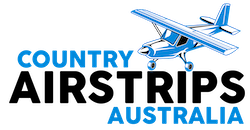Rottnest Island Western Australia – Home of the Quokka
Rottnest Island in Western Australia is located just 19 kilometres off the coast of Perth. Rottnest Island’s tranquil setting will make you feel worlds away from the hustle and bustle of everyday life. Rotto, as it’s affectionately called, is easily reached by a short ferry ride from the mainland. It is also car-free, so hire a bicycle once you arrive.
This protected nature reserve boasts an abundance of unique flora and fauna. This includes spectacular marine life and, of course, the adorable quokka. Discover rich cultural heritage, explore numerous beaches and bays, swim and snorkel in pristine waters. Also meet the happiest animal on earth, all in this little pocket of paradise.
Rottnest Island, Wadjemup, Rotto…
Rottnest Island has a rich history, spanning cultures and generations. It has been known by many names and used for different purposes.
Wadjemup

The History of Rottnest Island
Rottnest Island’s history extends back 50,000 years ago. when it was still connected to the mainland of Western Australia. Aboriginal artifacts suggest there was significant human occupation until ~7,000 years ago. At this time the rising sea levels resulted in the separation of the island. Without boats Aboriginal people on the mainland weren’t able to make the crossing. This left the island uninhabited for the next several thousand years. Rottnest Island features in Noongar Aboriginal mythology as Wadjemup, meaning “place across the water where the spirits are”.
‘t Eylandt ‘t Rottenest
After separating from the mainland, the island remained uninhabited. However 13 Dutch sailors from the Waeckende Boey landed near Bathurst Point on the 19 March 1658. This marked the beginning of the European exploration and settlement on the island. In 1696, Dutch captain Willem de Vlamingh spent 6 days exploring the island before calling it ‘t Eylandt ‘t Rottenest. The name meant “Rats’ Nest Island”, after the quokkas which he mistook for giant rats. In his reports, Willem described Rottnest island as “…a paradise on earth”.
Swan River Colony Offshoot
A couple hundred years later, William Clarke and Robert Thomson received land grants from the British Swan River Colony. This was for pasture land and town lots to be built on the island. In 1831 Thomson moved his family to the island and began building up the island’s main settlement at Thompson Bay. Pasture land for hay production was developed west of Herschel Lake. While several salt lakes were harvested and the salt was exported to the mainland. Today, you can wander through the main settlement and be transported back through time. As you stroll around you will pass early colonial cottages, including the salt stores.

Throughout the majority of the European exploration and settlement, Rottnest Island communicated with the mainland of Western Australia through semaphore flags and flares. Up until the 1880s, a manned lookout was at Bathurst Point. Included was a signalling station, which conveyed shipping information between the island’s Wadjemup Lighthouse and Arthur Head on the mainland. Wadjemup Lighthouse has undergone many upgrades throughout its history. It’s continuing to be in operation today by the Australian Maritime Safety Authority.
Rottnest Island Fortress
During World War II, Rottnest Island was an important part of the defence of the Fremantle port. Military fixtures including the railway, barracks, concrete lookouts, bunkers and four large guns positioned at Oliver Hill and Bickley Point. It became known as the “Rottnest Island Fortress”. Much of this infrastructure was decommissioned after WWII and in the 1990s the gun emplacements and railway were extensively reconstructed.
Today, you can set up camp in the old barracks, take a tour of the guns and tunnels, and journey to the battery on the train from Kingstown Barracks.

Rottnest Island still goes by many names – known as Wadjemup to the local Noongar people, and colloquially known as Rotto. Today, it is a popular holiday destination, with ~500,000 annual visitors. Rottnest Island has a rich social and geological history and a truly unique ecosystem. The Island has therefore been classified as an A-class reserve – the highest level of protection afforded to public land.
The Quokka
The Quokka is the only mammal which is native to Rottnest Island. These cute animals can be found almost everywhere on the Island. The quokka is mainly nocturnal. This means that it is mostly active at night, preferring to rest or sleep in the shade during the day.
The Quokka bounds and hops along the ground although it can climb trees if it needs to. It will sit on its hind legs to look around and will also use its front paws to search for and pick up food.

The Island habitat supports the largest known Quokka population and is essential for the survival of species. There are around 10,000-12,000 of these animals living on Rottnest. At all times of the year, there is a high number of Quokkas in the Settlement area because there is lots of water and food available. They have become one of the main tourist attractions of Rottnest Island because they have a cute appearance and are easy to see.
On Rottnest, Quokkas have a short breeding season which happens in late summer. One joey is born around February to April. It remains in the pouch until August or September. The joey suckles from its mother for another two months afterwards. The Quokkas on Rottnest do not breed again in the spring.

